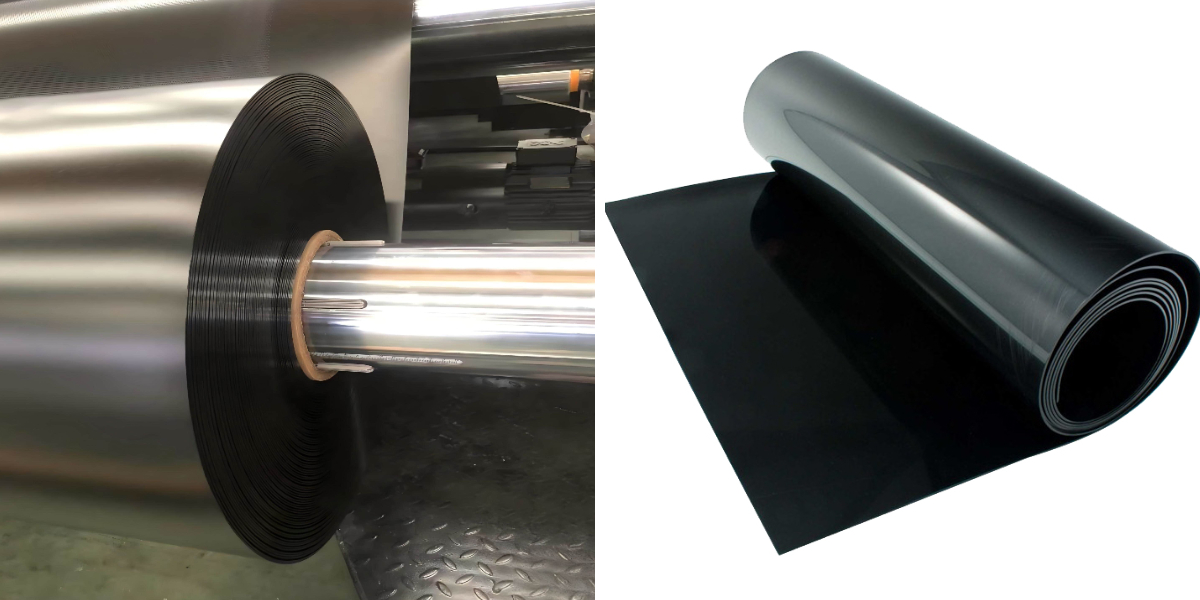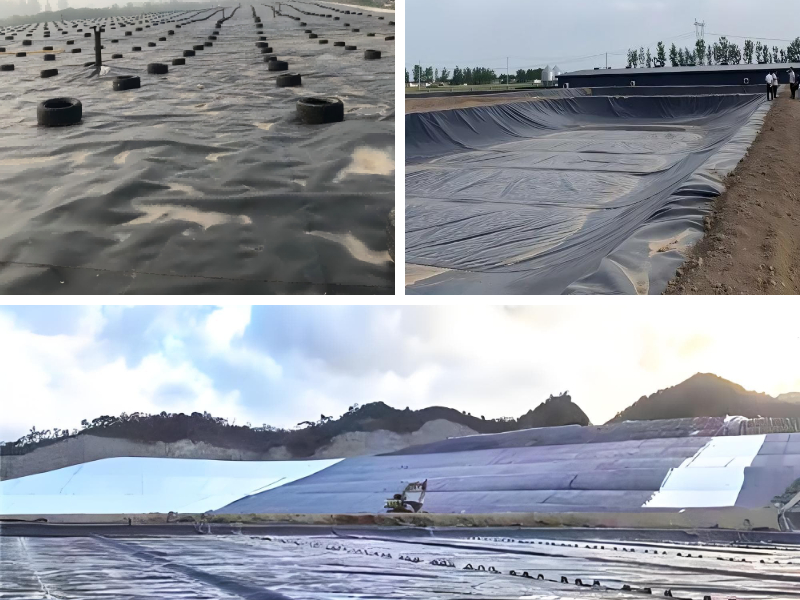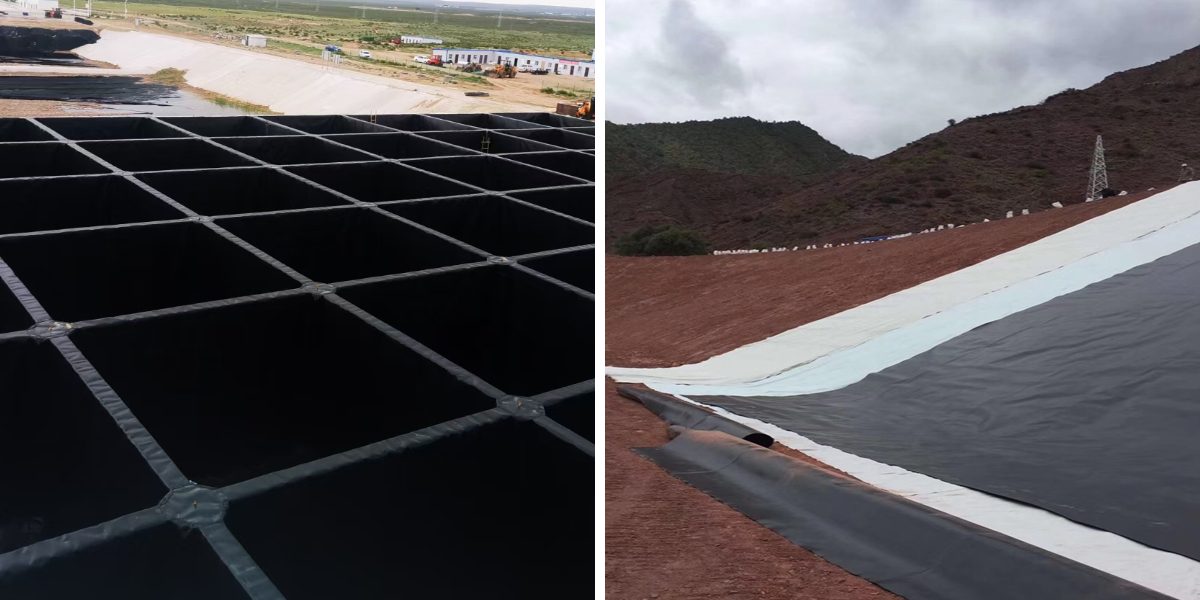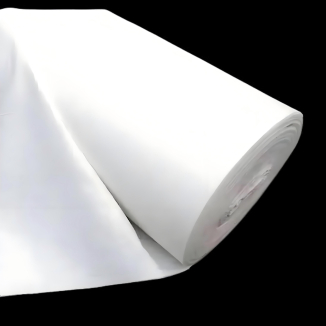Wastewater Treatment: HDPE Liners for Lagoons and Biosolids Storage
Wastewater therapy services face the necessary project of safely containing lagoons, biosolids, and handled effluent to defend public fitness and the environment. Leaks or seepage can contaminate groundwater, damage aquatic ecosystems, and lead to pricey regulatory violations. HDPE geomembrane has emerged as the enterprise trendy for containment in wastewater treatment, presenting unmatched durability, impermeable geomembrane performance, and reliability. As a specialised geomembrane material, it creates a seamless barrier that prevents leakage whilst withstanding the harsh prerequisites of wastewater environments. This information explores how HDPE geomembrane optimizes lagoon and biosolids storage, its key advantages for wastewater remedy facilities, set up nice practices, and why it’s the favored geomembrane cloth for long-term containment solutions.
The Critical Need for Impermeable Containment in Wastewater Treatment
Wastewater lagoons and biosolids storage services take care of substances wealthy in natural matter, nutrients, and doubtlessly unsafe contaminants. Without fine containment, these components can seep into the soil and groundwater, posing dangers to ingesting water materials and neighborhood ecosystems. Traditional containment methods, such as clay liners, regularly fail over time due to cracking, compaction issues, or uneven settlement—allowing seepage that violates environmental regulations.
Regulatory our bodies mandate strict leakage limits for wastewater containment, making impermeable geomembrane options essential. HDPE geomembrane addresses this want by way of offering a truely impermeable barrier that meets or exceeds the most stringent regulatory standards. Its resistance to chemical degradation, UV exposure, and bodily injury ensures long-term containment, defending each the surroundings and the facility from compliance penalties.
Why HDPE Geomembrane Stands Out as a Geomembrane Material
HDPE geomembrane (high-density polyethylene geomembrane) is a thermoplastic geomembrane fabric engineered for stressful containment applications. Its special houses make it perfect for wastewater lagoons and biosolids storage:
Superior Impermeability: HDPE has an extraordinarily low permeability rate, some distance decrease than clay or different artificial liners. This impermeable geomembrane trait ensures minimal to no seepage, stopping contaminant migration into the environment.
Chemical Resistance: Wastewater and biosolids incorporate acids, alkalis, and natural compounds that can degrade different materials. HDPE resists these chemicals, preserving its structural integrity and impermeability even after long-term exposure.
Durability: The cloth is especially resistant to UV radiation, abrasion, and punctures. It can face up to excessive temperature fluctuations, from freezing winters to warm summers, barring cracking or turning into brittle.
Flexibility: Despite its strength, HDPE geomembrane is flexible, permitting it to conform to uneven terrain and minor contract except compromising the containment barrier. This flexibility is critical for lagoons and storage services constructed on variable soil conditions.
Key Benefits of HDPE Liners for Lagoons and Biosolids Storage
For wastewater remedy facilities, HDPE geomembrane provides a vary of operational and environmental advantages that go past simple containment:
1. Regulatory Compliance and Environmental Protection
As an impermeable geomembrane, HDPE geomembrane ensures services meet strict regulatory necessities for leakage prevention. By stopping seepage, it protects groundwater and floor water from contamination, decreasing the danger of fines and reputational damage. For amenities in ecologically touchy areas, this environmental stewardship is no longer simply a compliance trouble however a neighborhood responsibility.
2. Long-Term Cost Savings
While the upfront fee of HDPE geomembrane may also be greater than clay liners, its durability and low upkeep make it greater good value over time. HDPE liners closing 20–30+ years with minimal upkeep, not like clay liners that require normal repairs or substitute each and every 5–10 years. The fabric additionally reduces operational charges with the aid of putting off the want for time-honored monitoring and remediation of seepage issues.
3. Easy Installation and Rapid Deployment
HDPE geomembrane comes in giant rolls that can be rapidly mounted on-site. Heat fusion welding creates seamless seams that are as sturdy as the liner itself, making sure a non-stop containment barrier. Installation requires much less heavy tools and labor in contrast to common liner systems, decreasing assignment timelines and minimizing disruption to wastewater remedy operations.
4. Versatility for Diverse Applications
HDPE liners are appropriate for all sorts of wastewater containment:
Aerobic and Anaerobic Lagoons: The impermeable geomembrane prevents seepage of dealt with or untreated wastewater, keeping appropriate lagoon quantity and remedy efficiency.
Biosolids Storage Basins: Biosolids are nutrient-rich however can leach contaminants if no longer contained. HDPE liners safely keep biosolids whilst stopping groundwater contamination.
Effluent Ponds: Treated effluent requires impenetrable containment earlier than reuse or discharge, and HDPE liners make sure compliance with water high-quality standards.
Installation Best Practices for HDPE Geomembrane in Wastewater Facilities
Proper set up is essential to maximizing the overall performance of HDPE geomembrane as a containment barrier. Follow these quality practices:
1. Site Preparation
Clear the web page of rocks, roots, debris, and sharp objects that may want to puncture the liner. Level and compact the soil to create a smooth, steady base. Install a non-woven geotextile underlay under the HDPE geomembrane to supply extra safety in opposition to abrasion and punctures, mainly in areas with rocky or uneven soil.
2. Seam Welding and Testing
Seams are the most necessary phase of an impermeable geomembrane system. Use warmness fusion welding (hot wedge or extrusion welding) to be a part of HDPE sheets, growing a molecular bond that eliminates leakage points. After welding, check all seams the usage of vacuum checking out or air strain checking out to make sure they are leak-free. Any faulty seams must be repaired and retested earlier than proceeding.
3. Anchoring and Edge Protection
Anchor the HDPE geomembrane alongside the edges of lagoons or storage basins the usage of anchor trenches stuffed with compacted soil or concrete. This prevents the liner from transferring due to water strain or wind. Install part protection, such as concrete curbs or rock riprap, to protect the liner from injury by means of equipment, wildlife, or weather.
4. Post-Installation Inspection and Maintenance
After installation, look at the liner normally for symptoms of damage, such as punctures, tears, or seam separation. Conduct periodic leakage monitoring to make certain the liner stays impermeable. Repair small damages without delay the usage of HDPE patches and warmth fusion. Avoid dragging heavy gear throughout the liner, and avert get right of entry to to the containment location to stop unintentional damage.
Real-World Applications of HDPE Liners in Wastewater Treatment
HDPE geomembrane has been efficiently carried out in wastewater remedy amenities worldwide, fixing complicated containment challenges:
1. Municipal Wastewater Lagoons
A mid-sized metropolis upgraded its getting old wastewater lagoon gadget with HDPE geomembrane liners. The preceding clay liners had developed cracks, main to seepage and regulatory concerns. The HDPE liners have been set up over the present clay base, developing a dual-containment system. Post-installation trying out confirmed zero seepage, and the facility now meets all environmental regulations. The liners additionally decreased renovation expenses by means of getting rid of the want for everyday clay recompaction.
2. Biosolids Storage for Agricultural Reuse
A rural wastewater therapy facility makes use of biosolids as natural fertilizer for neighborhood farms. To safely save the biosolids earlier than distribution, the facility mounted HDPE geomembrane liners in its storage basins. The impermeable geomembrane prevents nutrient leaching into groundwater, whilst the liner’s chemical resistance ensures it withstands the excessive natural content material of biosolids. The facility now safely substances biosolids to farms, lowering reliance on artificial fertilizers.
3. Industrial Wastewater Containment
A meals processing plant generates wastewater with excessive natural and acidic content. The plant mounted HDPE geomembrane liners in its wastewater lagoons to stop chemical degradation and seepage. The liners’ resistance to acids and natural compounds has maintained their integrity for over a decade, and the plant has prevented regulatory violations whilst lowering cure costs.
Conclusion: HDPE Geomembrane—The Gold Standard for Wastewater Containment
HDPE geomembrane is the premier geomembrane cloth for wastewater lagoons and biosolids storage, providing unmatched impermeable geomembrane performance, durability, and cost-effectiveness. Its capacity to meet strict regulatory standards, guard the environment, and limit long-term prices makes it an vital funding for wastewater remedy facilities.
As wastewater remedy services face growing stress to enhance effectivity and sustainability, HDPE geomembrane offers a dependable answer that balances overall performance and environmental responsibility. Whether upgrading current lagoons, constructing new biosolids storage, or making sure regulatory compliance, HDPE liners supply the containment safety that wastewater therapy services demand. Choose HDPE geomembrane, and you’ll construct a containment machine that protects public health, the environment, and your facility’s backside line for many years to come.
Contact Us
Company Name: Shandong Chuangwei New Materials Co., LTD
Contact Person :Jaden Sylvan
Contact Number :+86 19305485668
WhatsApp:+86 19305485668
Enterprise Email: cggeosynthetics@gmail.com
Enterprise Address: Entrepreneurship Park, Dayue District, Tai 'an City,
Shandong Province










